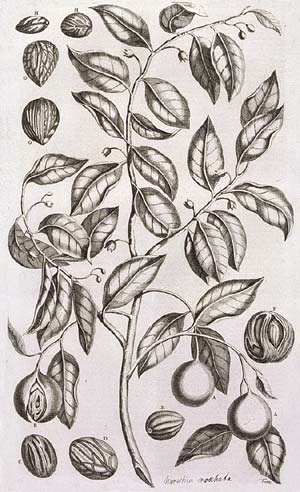What was the return on VOC shares?
Did investors in the world’s first IPO get rich? In this blog post, I’ll give the answer, based on VOC share price data that I collected from various archival sources during the research for my book. I’ve made my data available for download and reuse in a Google Sheets document.
VOC share price data
The price data are sketchy. Neither the exchange clerk nor the VOC itself recorded the prices. However, for the 17th century, I found 851 share price observations in financial papers and correspondences of merchants, notarial deeds, and, occasionally, newspapers. The following chart shows average monthly prices for shares in the Amsterdam branch of the VOC. (Shares in other chambers traded at slightly lower prices. Amsterdam traders paid a liquidity premium—relatively high trading volumes ensured them that they could always sell off their investment. In the province of Zeeland, shares were taxed differently, causing a further price difference.
The chart is interactive; hover over it to display individual price observations. All prices shown are ex-dividend. They are index prices, where the price of August 1602 is set at 100.
Until 1633, the share price never crossed the 200 barrier. Then it started to rise quickly and steeply. In the second half of the 17th century, wars with England (1652-1654, 1665-1667, 1672-1674), France (1672-1679) and the invasion of Dutch stadholder William III in Engeland (1688) caused heavy fluctuations around a mean of c. 450.
Creating shareholder value by force
The boom that started in 1633 was remarkable, to say the least. Ten years before, in 1623, activist shareholders had been very critical of the VOC. Their pamphlets made it abundantly clear that the company did little to create shareholder value. The directors were concerned primarily with their own incomes, and the States General looked on the company first and foremost as a vehicle for conducting war that was intended to safeguard the long-term presence of the Republic in the Far East. The shareholders, on the other hand, would have preferred the emphasis to have been on making the biggest possible profit.
Around that time, however, the VOC changed its strategy. Under the leadership of Jan Pietersz Coen, the company ruthlessly penetrated the Far East. These were the bloodiest years in the company’s history. Genocide was committed on the Banda Islands in 1621 and rulers of other islands in the Moluccas region were forcibly forced to deliver spices to the Dutch. The shareholders in the Republic barely concerned themselves with the fate of the local population in the areas where the VOC was operating. They were primarily interested in the Company’s profitability, and the change in policy had a very positive effect. From around 1620 the VOC started to become profitable. And from 1630 to 1650, the company turned in its best results of the seventeenth century. Shareholders shared in the profits through regular dividend distributions. The share price jump in this period reflects expectations about a growing dividend yield.
VOC dividends: mace and cloves
In the first twenty years after the VOC was founded, dividend payments had lagged far behind the shareholders’ expectations. The company’s predecessors, the so-called ‘pre-companies’— which were the only point of reference—had on average paid out big dividends. After the arrival of a flotilla, these companies always paid out the proceeds from the cargo to the shareholders without delay. Article 17 of the VOC suggested that it would follow a similar policy. It stated that the company would pay a dividend each time goods with a value of 5 percent of the initial capital were brought to the Dutch Republic. However, it didn’t. Shareholders saw East Indiamen returning, but for the time being they did not receive a cent. It was not until August 1609, and quite possibly under pressure of the bear raid of Isaac le Maire, that the VOC announced its first dividend payment. There was no cash at hand, however. Instead, the company announced to distribute a quantity of mace—an Oriental spice—with a value of 75 percent of the share capital in April 1610. This meant that a shareholder holding a VOC share with a nominal value of 1,000 guilders could collect 750 guilders worth of mace. That’s more than anyone would eat in their lifetime. Most shareholders considered their first dividend merchandise and shipped it to different parts of Europe.

Starting in 1623, the VOC paid out a dividend every two years, and from 1635 on until the company’s bankruptcy in the late 18th century, with only a few interruptions, every year or every six months. In the 1630s and 1640s, the dividend was still often paid in kind, now primarily in the form of cloves. The shareholders were happy with it anyway. The dividends signaled that business was going well. (And they were the main source for shareholders to base their expectations on: the VOC never issued financial reports.) From 1646, VOC dividends were mainly in cash. On a few occasions, the company distributed bonds.
VOC reinvestment index
To calculate the return earned on VOC shares, I’ve compiled a reinvestment index. This index incorporates both share price fluctuations and dividend yield: it shows the value over time of an investment of 100 guilders in the IPO of the VOC in 1602, assuming that all dividends received were immediately reinvested in shares. (So when, for example, the VOC issued a dividend of 40% in cash in 1671, the imaginary shareholder who had invested 100 guilders in 1602 and had seen his portfolio grow to a nominal value of 3,746 guilders as a result of steadily reinvesting dividends, received a cash distribution of 1,498.31 guilders. At the time of the dividend distribution the shares traded at 473.60, so reinvesting the 1,498.31 guilders brought the portfolio to a nominal value of 4,062 guilders. The market value of this portfolio was 19,238.30 guilders.) By the end of the century, the 100 guilders of 1602 had accumulated to just over 65,000 guilders.
Notes on the reinvestment index:
1) If no share price observation is available for the month in which a dividend distribution took place, the dividend is reinvested at an interpolated price.
2) In this index, the first reinvested dividend is the 162.5% distribution of 1618. See my blog post on the evolution of the VOC capital stock (soon TBA) for an explanation of the significance of this dividend distribution for the history of company equity.
Yearly returns on VOC shares
The average yearly return of the reinvestment portfolio (1603-1697) was 8.69%. This is markedly higher than the interest paid on bonds of the province of Holland in this era, which dropped from 6.25% in the early 17th century to around 4% in the second half of the century.
The following chart shows the yearly return of the reinvestment portfolio, 1603-1697.
For clarity, the following chart shows the same values, but starts after the momentous dividend of 1618.
Price data
I’ve made my data available in a Google Sheets document (see below, or follow this link to access and/or download my data).


